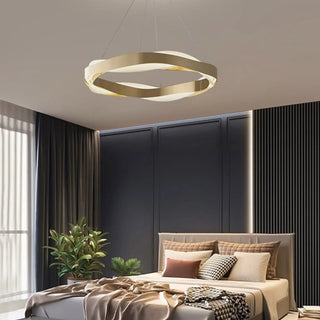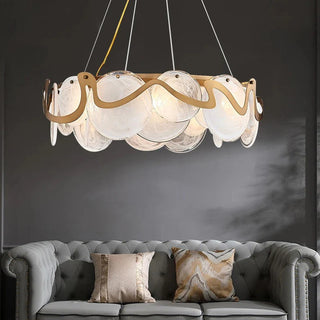Long before electricity, there were chandeliers. Previously, candles were used instead of lamps, which resulted in a fairly constrained design. You may make chandeliers in all shapes and sizes using a variety of materials, intricate lighting arrangements, numerous types of lamps, and even remote control technology. You can navigate the most diverse world of contemporary chandeliers using our advice.
Chandelier size
When picking a chandelier, one must consider more than just the height of the space. A chandelier too little put in a large room will look ineffective and even absurd, as will a chandelier too enormous that is put into a small room.
How can the appropriate chandelier specifications be found? Designers have long known the solution and advice using the following straightforward formula to get the diameter and length of the chandelier:
D is equal to (the room's length in m plus its width in m) x 10 cm.
For instance, a chandelier with a diameter of roughly 90 cm is acceptable for a living room of 5 by 4 meters.
Elongated chandeliers are appropriate for long, narrow rooms, but they cannot serve as the only source of lighting in more or less large rooms; sconces, floor lamps, spotlights, table lamps, etc. should be added as well.
Type of chandelier and room
What kind of chandeliers should one get for the kitchen, the bedroom, and the hallway? There are varied lighting needs in each of these spaces, and those needs should be considered along with the chandelier's choice of material, size, and wattage.
1. The living room, the largest room in the house, needs a chandelier that will establish the mood. It should be substantial and conspicuous. A traditional five-horned hanging chandelier will be a great choice, but you can also locate some unique ceiling-mounted options. It makes logical to strategically arrange two identical chandeliers in an expansive living area.

2. Soft diffused lighting should be produced in the bedroom by the chandelier, therefore special attention should be made to the ceiling lights and the light's direction. The majority of bedrooms are small, so a ceiling chandelier is preferable. Floor lamps, sconces, or table lamps are positioned close to the bed because it is impossible to function without additional light sources in the bedroom.

3. A kitchen chandelier should be a small, easy-to-clean ceiling light that is unafraid of moisture, so choose items with the simplest designs possible. Metal is the ideal material for a kitchen chandelier; glass is acceptable but will require frequent cleaning.






